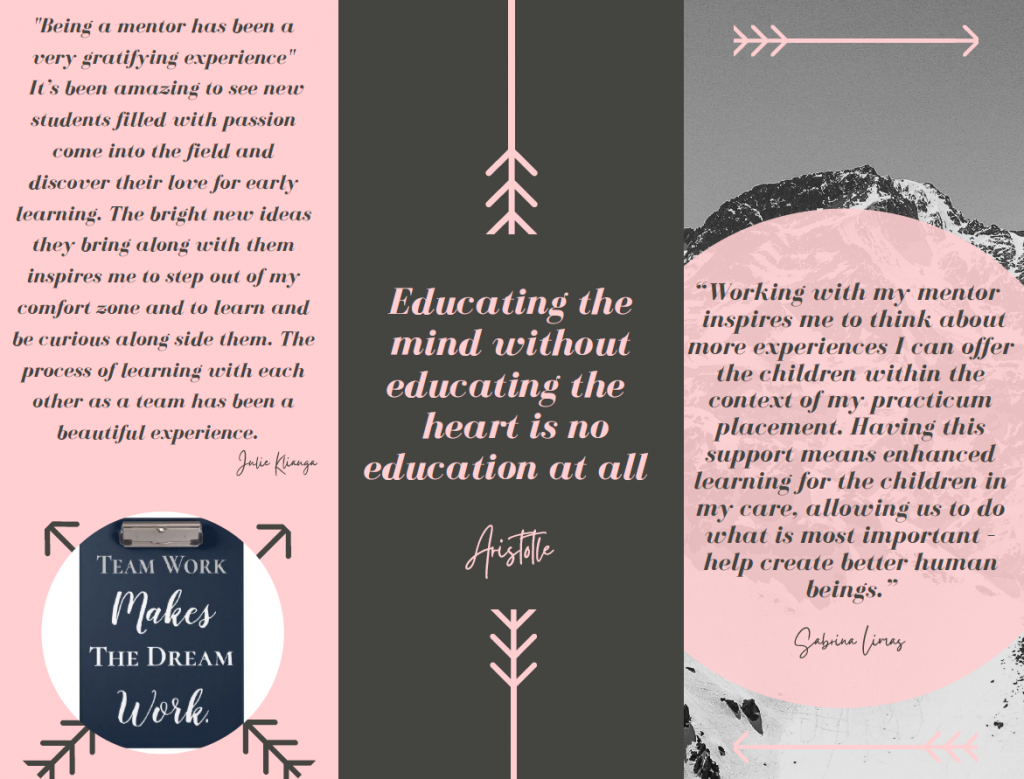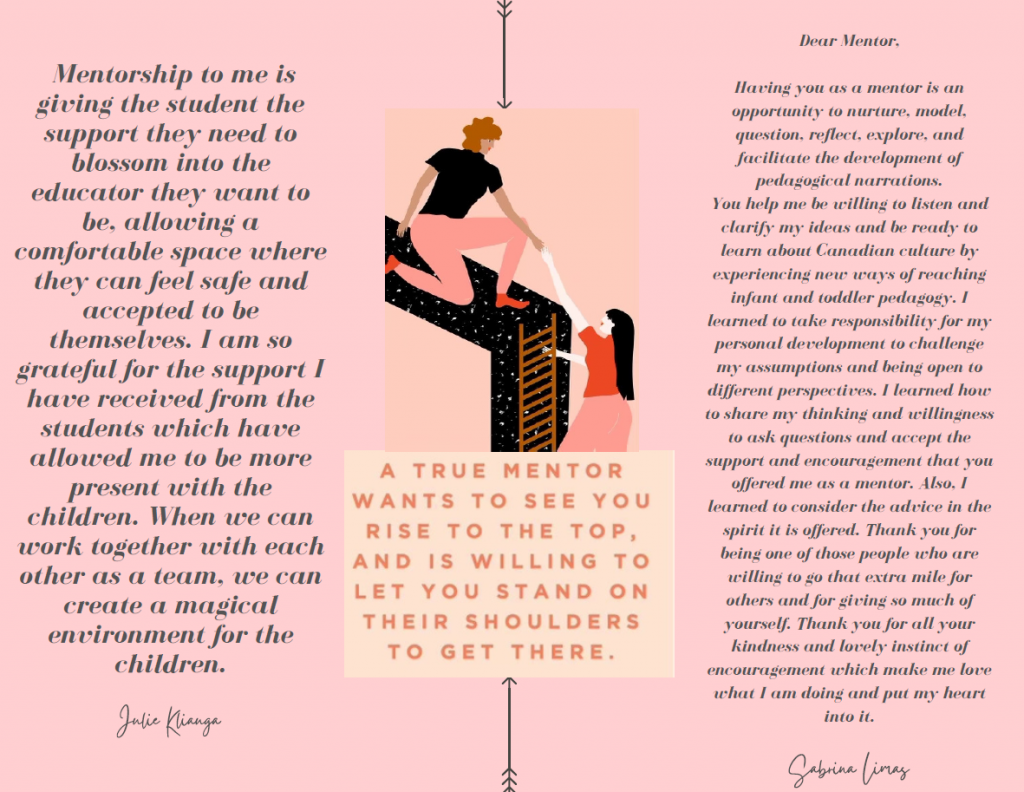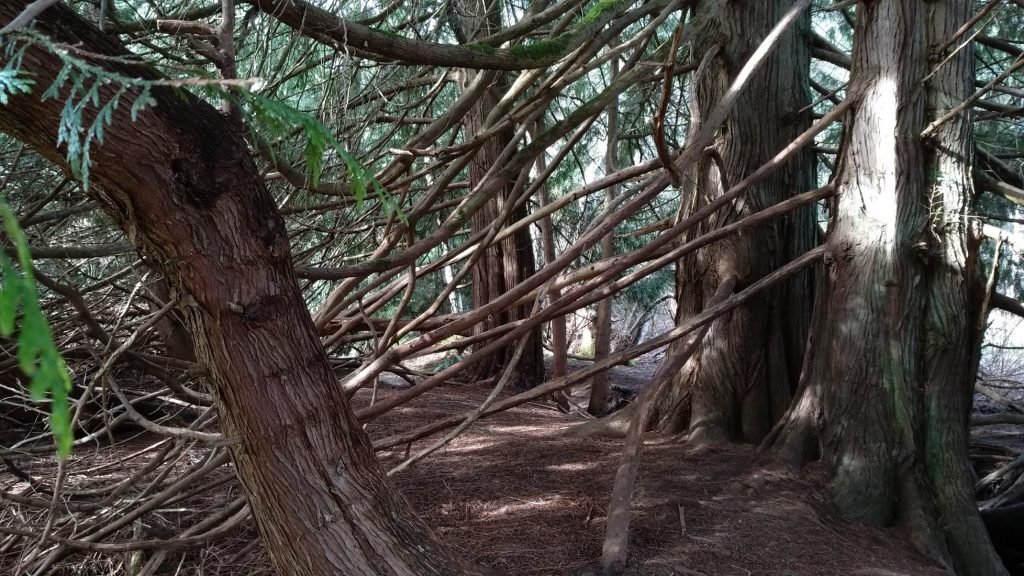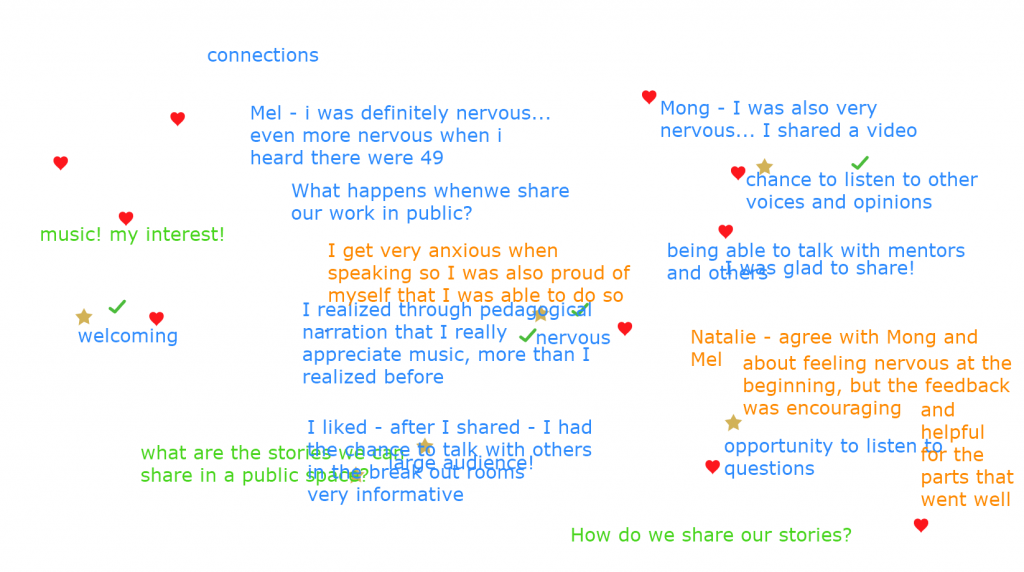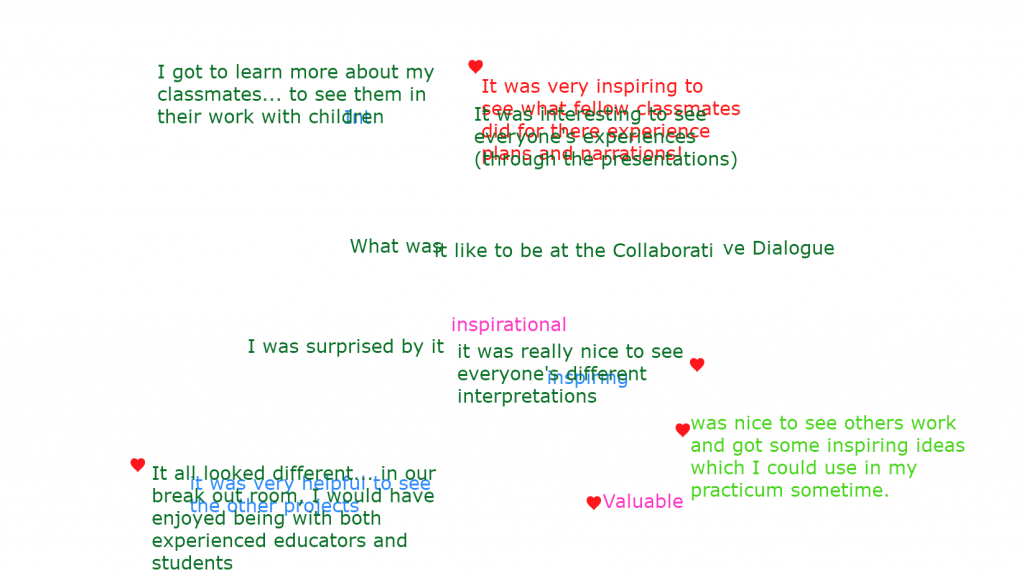By Lacey Holmes
I am thankful for being introduced to the infant toddler curriculum from such dedicated educators as Magda Gerber (Gonzales-Mena & Widmeyer Eyer, 2018) and Ward Nakata (Child Care Human Resources Sector Council, n.d). While watching their individual interviews related to infant and toddler child care, I can really tell how dedicated and knowledgeable they are in this field. Both talk so highly about respecting the infants in their care, and following the children’s rhythms of the day. I am very interested in exploring how we might follow children’s rhythms in early years programs and will be engaging with the following critically reflective question posed in the ELF (Government of BC, 2019): “What role does the clock play in my day? Do routines follow the clock or the people in my program” (p. 78)?
I recently watched the video ‘Thinking big: Extending emergent curriculum projects’ (Felstiner, Pelo, & Carter, 1999).
The children in the centre were really interested in the block building activity.
The teachers sustained this interest in building for weeks by letting the children use wooden cubes to stack and climb on to make tall towers.
The educators supported the children in building even taller towers, by taking them to the hardware store to buy a step ladder.
Finally, the educators further sustained curiosity and inquiry by going on a field trip to a local park to have a tour of a large stone tower.
I am curious to find out how children and educators can generate curriculum like this together. As a practicum student, I also wonder how I might become engaged in co-creating curriculum with children and educators. How might we accommodate and respond to children’s interests? What might happen when children’s rhythms, rather than the schedule, lead the day? What might it feel like for children, educators, and families to be in a setting with fewer limits around, or structure on, activities and schedules? I have noticed from my experience in a preschool setting that each child goes through the day at a pace. Some children really enjoy painting and take their time, while others are finished in minutes. Some children eat very quickly while others like to socialize while they eat. Some children enjoy an afternoon nap, while others do not need the extra sleep. How can we be accommodating to each child’s unique needs? What is fair?
The First Peoples Principles of Learning remind us: “Learning involves patience and time” (Government of BC, 2019, p. 14). To notice the children’s rhythms we must be attentive and in the moment. If our attention is divided, then we are not able to pick up on the cues the child is trying to communicate with us. Danielle Alphonse (personal communication, Jan 29, 2021) reminds us what matters in our relationships with children: “An educator is being really present. Identifying your gift as an educator is honouring what you have in your mind, heart, spirit and recognizing your internal thoughts regarding guidance to support children’s development/behaviour for their future, or are you basing your decisions by thinking about the past interactions? Asking these appreciative inquiry questions helps an educator to situate oneself in the present. Children know when you are not being present with them, and they know right off the bat and will decide not to give you time and engage in relationship. If children don’t feel like you are giving them your full presence (attention) like they do, they will engage with another educator who is giving them full acknowledgement of their being.”
While we continue to learn and grow with our little explorers, I would like to challenge you. Be fully present, get engaged with the materials, and build on the interests to take the learning experience to the next level! Whether that’s with a trip to the hardware store or simply your time and attention. Take a page from the book of everyone’s favourite teacher:
“Take chances, make mistakes, and get messy!” – Miss Frizzle
References:
Child Care Human Resources Sector Council (n.d.). Working in early childhood education – Early childhood educator profile: Ward Nakata. Child Care Human Resources Sector Council. https://vimeo.com/38643168
Gonzales-Mena, J. & Widmeyer Eyer., D. (2018). Infants, Toddlers, and Caregivers: A curriculum of respectful, responsive, relationship-based care and education (11th Ed.). McGraw-Hill Education.
Government of British Columbia. (2019). British Columbia early learning framework (2nd ed.). Victoria: Ministry of Education, Ministry of Health, Ministry of Children and Family Development, & British Columbia Early Learning Advisory Group. https://www2.gov.bc.ca/gov/content/education-training/early-learning/teach/early-learning-framework
Felstiner, S., Pelo, A., Carter, M. (1999). Thinking big: Extending emergent curriculum projects. Hilltop Children’s Center. Harvest Resources.


